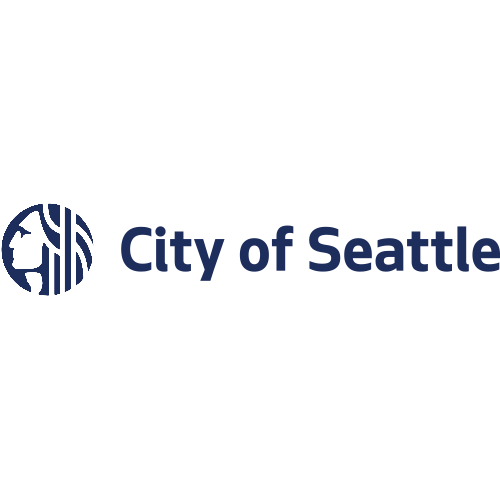Creating a Reliable, Effective Emergency Alert System
The U.S. Federal Communications Commission (FCC) implemented a public warning system for emergencies in 1994. The Emergency Alert System (EAS) was designed to allow federal, state and local agencies to quickly warn local populations of crisis situations. The Emergency Alert System enables federal and local authorities to broadcast emergency notifications via radio and television.
Facilitate Rapid, Reliable Delivery of Emergency Alerts
In 2012, the FCC launched the Wireless Emergency Alert (WEA) System to deliver emergency notifications via wireless devices. Authorized administrators may send emergency alerts to cell phones and other wireless devices through the Integrated Public Alert and Warning System (IPAWS), which is managed by the Federal Emergency Management Agency (FEMA).
While most Americans are familiar with the national EAS, this system is primarily used by federal and local governments. It doesn’t always provide emergency notifications for crisis scenarios affecting private organizations, such as corporations, schools and healthcare institutions. These organizations need additional ways to communicate with their employees, students, patients and local residents during emergencies.
Fortunately, the federal EAS provides a helpful example for private organizations to follow as they create their own emergency alert systems. By incorporating multichannel messaging and automating notification procedures, businesses, schools and institutions can develop and maintain a reliable, robust critical communications system that’s ready to handle both emergency and non-emergency situations.
Rave Mobile Safety offers a broad range of critical communications and mass notification solutions designed to simplify and improve emergency alert systems. From 9-1-1 integration software and collaboration tools to mobile apps, Rave ensures corporations, organizations, government agencies and educational institutions have the tools they need to develop comprehensive emergency alert systems.
The Federal EAS Provides the Blueprint for Corporate Emergency Communications
The FCC’s Emergency Alert System enables federal and local authorities to quickly notify defined groups of people about crises, providing crucial information to help individuals respond correctly and stay safe. One of the most important benefits of the EAS is its use of multichannel notifications. By providing emergency alerts via radio, television and wireless devices, the EAS gives authorities the ability to reliably and quickly reach intended recipients.
Additionally, the EAS provides authorities and crisis managers with a comprehensive, clearly-defined process for emergency notifications. Step-by-step procedures allow authorities to make the best use of the WEA System and EAS to provide crucial information to residents during severe weather, illness outbreaks, wildfires, workplace violence and other crises.
Schools, corporations, healthcare institutions and organizations can learn valuable lessons from the EAS and use it to develop their own emergency alert systems. There are many vital EAS features to emulate, but one of the most important is mass notification functionality.
The FCC’s EAS sends notifications via an array of channels to reach people in various locations. Private entities can follow suit by choosing a mass notification tool with multichannel functionality. Sending emergency alerts via telephone, voicemail, VOIP, email, social media, desktop and SMS text messaging gives administrators the best chance to reach recipients as quickly as possible.
Another key feature of an effective emergency alert system is two-way communication. Allowing users to respond to alerts provides advantages for incident managers, emergency responders and users.
Emergency managers can utilize geo-polling to request status checks. First responders and 9-1-1 dispatch can request live videos, photos and details about ongoing incidents. Mobile panic button apps allow users to report an emergency with one tap on their smartphone, and text-from-911 enables vital non-verbal communication.
By incorporating multichannel emergency notifications and two-way communication, administrators and incident managers can ensure their organization’s emergency alert system supports the best possible outcome in any crisis situation.
Essential Features of a Robust Emergency Alert System
Rave allows each user to choose their preferred language from over 60 options and automatically translates emergency messages.
A robust mass notification system automatically sends messages via multiple channels: SMS text messages, emails, social media, desktop alerts and telephone calls.
Opt-in/opt-out functionality allows visitors and temporary employees to sign up for emergency alerts, ensuring optimal mass notification results without unnecessary overhead or database updates.
Two-way communication features allow administrators to initiate wellness checks to verify the safety of employees, students and other personnel during or following a crisis.
Rave Mobile Safety’s emergency alert tools integrate with existing systems to provide better functionality and additional notification options beyond traditional fire alarms and severe weather warning systems.
Mass notification tools and emergency alert software integrate with 9-1-1 systems, facilitating collaboration and ensuring fast, accurate emergency response.
Developing a Functional, Cost-Effective Emergency Alert System
The best emergency alert system for corporations and private organizations is one that’s easy to use, reliable and flexible, providing the best possible return on investment. With the right software and communication tools, an emergency alert system can also be used for non-emergency internal communications.
Once an emergency alert system is developed and implemented, it’s crucial to update emergency preparedness plans to incorporate the new features and improved functionality. Additionally, regular emergency drills are important, as they allow incident administrators to test emergency procedures and maintain familiarity with mass notification and incident management tools. Finally, conducting After Action Reviews following both drills and real incidents allows administrators to verify which processes and tools are working well and make changes to improve those that failed.
Facilitate Fast, Secure Internal Communications
Utilizing mass notifications for time-sensitive alerts, such as HR messages, corporate announcements and scheduling changes, ensures that employees receive alerts quickly. The ability to send messages to targeted groups helps preserve privacy and security. The ability to send messages to targeted groups help preserve privacy and security, while also decreasing the risk of alert fatigue.
Enable Multiple Means of Communication with 9-1-1
Tools like text-to-tip and a mobile panic button allow residents, staff members, students and visitors to quickly and securely report dangerous behavior or emergency situations. Text-from-911 allows users to talk with dispatch and first responders even in situations when verbal communication is impossible or unwise (e.g., while hiding from an active shooter).
Keep Employees Safe During Emergencies
A comprehensive emergency alert system is a vital part of preparedness and incident management. Administrators can quickly alert key populations of ongoing situations and provide crucial information during and following an event.
Complement Traditional Alert Systems
Fire alarms, automated telephone alerts and blue light stations are a few examples of alarm infrastructure that exists in many buildings and campuses. Adding cutting-edge communication and notification software enhances these important alert mechanisms without removing or replacing them.
Keep Remote Personnel Informed
Remote workers may not be affected when the office’s fire alarm goes off, but they do need to be notified of many types of emergencies: cybersecurity incidents, network and power outages, staffing and schedule changes and ad-hoc IT maintenance events.
Trusted by Thousands of Organizations
Thousands of customers trust Rave to help protect their employees, students, and residents. Our customers include some of the largest communities, most respected companies, and best known colleges and universities in the world.






Customer Success Stories
Emergency Alert System Frequently Asked Questions
Talk With An Expert
Discover our prepackaged solutions or configure a package that’s right for your community, company, K-12 schools and higher education system. Learn how you can be up and running in days, take advantage of unlimited emergency usage, and benefit from unbeatable performance and customer satisfaction.

